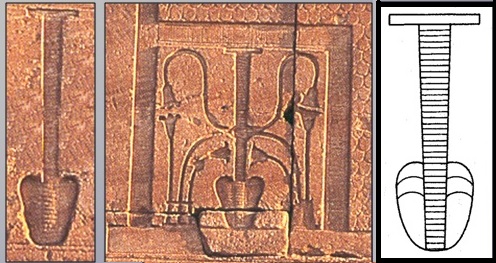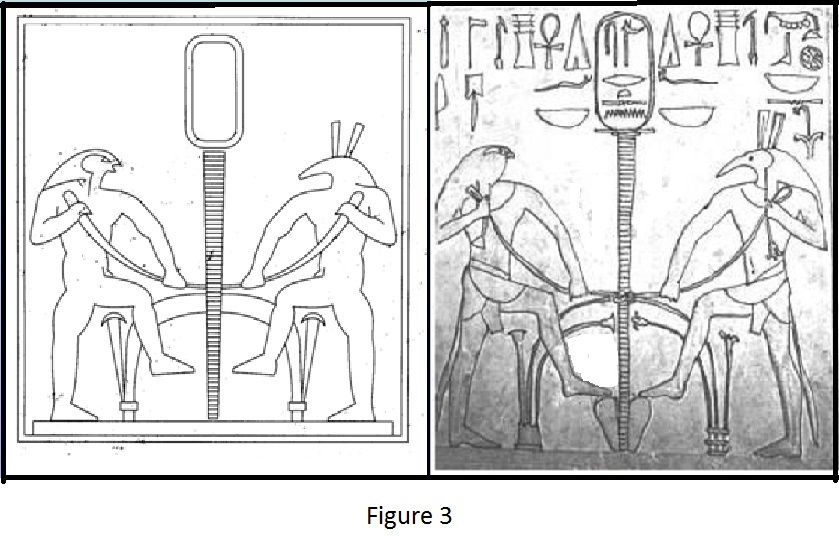Pseudoarchaeologists misrepresent archaeological evidence. Duh. Sometimes it’s from ignorance, sometimes from wishful thinking, and sometimes from repeating the misrepresentations of previous “alternative scholars.” Sometimes, though, it looks like there’s an element of downright dishonesty. Here’s a tiny but entertaining example from Graham Hancock’s 1998 opus, Heaven’s Mirror: Quest for the Lost Civilization.
Hancock is a leading light of the lost-supercivilization fraternity – Atlantis by any other name. In Heaven’s Mirror, sumptuously illustrated with photographs by Hancock’s wife, Santha Faiia, the great man roams the world finding clues to an ancient cabal of astronomer-priests who knew all about precession by 10,500 BC, and whose coded wisdom determined the layout of monuments from Egypt to Tiwanaku, from Angkor Wat to Yonaguni. Among the usual suspects, Hancock extensively references Hamlet’s Mill, one of the most peculiar works of pseudohistory ever to come out of academe, and worth discussion in its own right.
Hamlet’s Mill, first published in 1969, is a wild gallop through comparative mythology, based on the insistence that everybody except the book’s authors (and especially all anthropologists and archaeologists) are interpreting everything from antiquity all wrong. All mythology, all over the world, can apparently be boiled down to an ancient ur-myth rooted in sophisticated astronomical observations, codified for the sake of secrecy, and then hyperdiffused from its origin in the Middle East to the rest of the planet. A central motif, related to the whirling axis of the earth, is a vast rotating drill or mill. The book is chaotic, totally disconnected from archaeological evidence, shamelessly speculative, and generally batty, but beloved of pseudoarchaeologists because it seems to give scholarly backup to their Atlantean fantasies. Anyway, back to Heaven’s Mirror.
On p.146, near the end of a chapter on Angkor Wat, Hancock presents the image in Figure 1. He does not give the source of the image, but it’s off a statue of the Pharaoh Senwosret II, found in the precinct of his pyramid at Lisht. The pharaoh is enthroned, and this image is from the side of the throne (Figure 2). Hancock describes it as:
…Horus and Set co-operating, pulling on either end of a long rope wrapped around a vast drill and thus rotating it. (Ref: Hamlet’s Mill, illustration opposite 162, caption.)
The theme continues on the next page with a photo of the same motif in a relief from Karnak, captioned (in part):
The stylized drilling device…is continuously mislabelled by Egyptologists as ‘the uniting of the two lands’ whether Horus and Set turn it, or the two Nile gods (as is more often the case), or the two lions of yesterday and today.
Now, I’m going to tell you why Egyptologists have the temerity to identify this image with ‘uniting of the two lands.’ First off, the ‘two lands’ in question are Upper and Lower Egypt, semi-mythically unified by the first pharaoh (‘Lord of the Two Lands’) at the beginning of Egyptian history; the dual nature of Egypt was a constant theme through the next three thousand-odd years, as was the king’s responsibility to keep the two united. The scene on the Lisht throne is a common one, and absolutely crawling with standard unification symbols. But you won’t see them in Hancock’s version.
Figure 3 shows Hancock’s version side-by-side with the original – Hancock’s drawing omits a number of crucial details, ones that make it perfectly obvious what the so-called “drill” really is. For example, the original has that heart-shaped object at bottom-centre, on which Horus and Set are resting one foot each. In Hancock’s version, the gods seem to be doing some kind of hokey-cokey, with their feet hanging rather awkwardly in midair. At the top, the hieroglyphs inside the cartouche (oval feature) are missing, also the crossbar at the bottom of the cartouche.

These are important omissions. The body of Hancock’s “drill” is in fact a hieroglyph (Figure 4) – a stylized drawing of a windpipe and lungs, with the phonetic value smʒ (sema). It’s used in the word for lungs, of course; but also in the words for unite (smʒ), union (smʒt), confederate (smʒy), etc. It is the standard centrepiece for this kind of scene, and also commonly used on its own in amulets, friezes and reliefs to express the concept of union. To construct his “drill”, Hancock has carefully omitted the lungs and the bar at the top (which serves double purpose here as the base of the cartouche). Furthermore, he has omitted the name of Senwosret, to obscure the fact that the head of the so-called drill is a perfectly ordinary cartouche, the conventional way of enclosing the king’s name.

Another dead giveaway is the omission of the lotus blossoms and papyrus bells (Figure 5), symbols of Upper and Lower Egypt respectively, the two polities whose union is being commemorated. Why Hancock replaces two of them with crescents, I cannot say. What he calls a “rope”, however, is in fact the elongated stems of these totemic plants, knotted around the shaft of the smʒ glyph. Which brings me to the knot itself, which would make it impossible for Horus and Set to rotate the so-called drill. Another significant change is substituting crude flowerpots for the glyphs in which the flowers are rooted, which are again symbols for Upper and Lower Egypt. The case for unifications symbolism is pretty clear.

So much for Egyptologists “mislabelling” the scene. Rather, Hancock has misrepresented it. He is clearly following the lead of Hamlet’s Mill, which uses the same image (Figure 6), and his caption on the Karnak scene is largely a paraphrase of the Hamlet’s Mill caption. So to that extent, Hancock’s ignorant interpretation is almost a cut-and-paste job from previous wishful thinkers. But there is a difference: Hamlet’s Mill at least presents the image unchanged; Hancock carefully edits out, with suspicious thoroughness, precisely the details that give the lie to this misrepresentation. To me, that seems pretty dishonest.


